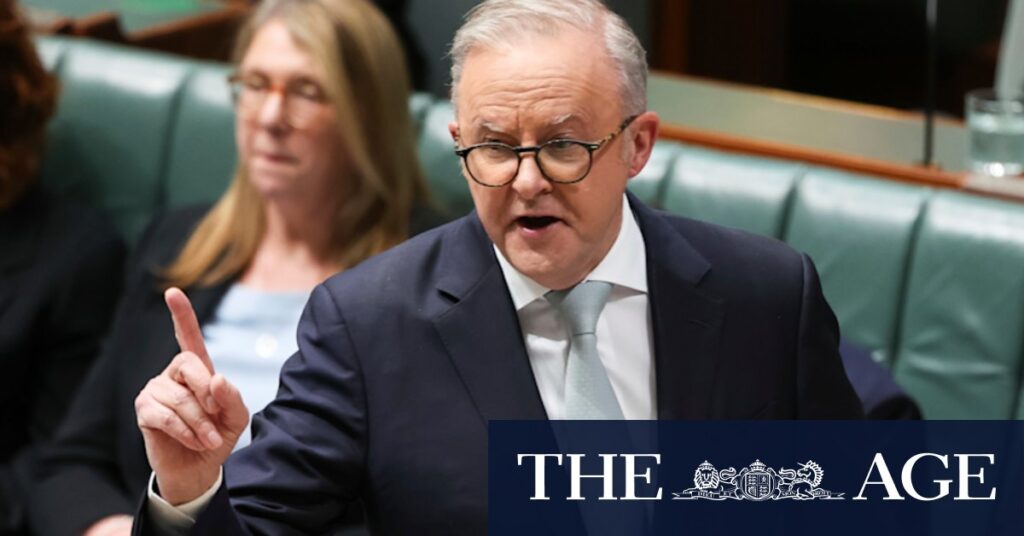
Australia’s anticipated 2035 climate target has been a topic of intense debate, as Greens leader Larissa Waters claims it was set even before the last election. This assertion follows revelations from Treasury officials, suggesting the government had been focusing on a specific emissions-reduction figure for months.
The Albanese government is poised to announce its emissions-reduction goals for 2035 later this week. The announcement comes amidst heightened lobbying efforts from political opponents, industry groups, and climate change skeptics.
Controversy Over Pre-Election Target Setting
During a Senate inquiry, Waters questioned Treasury’s first assistant secretary, Dr. Alex Heath, about the department’s approach to climate modeling. Heath confirmed that the department had been modeling the economic implications of a single target figure, rather than exploring a range of options.
“The nature of the modeling we have done has a point estimate for 2035,” Heath stated. “That is a function of the model we have and the difficulty in dealing with a range of numbers.”
Australia has committed to reducing emissions by 43 percent by 2030. Under the Paris Agreement, countries are required to update their targets every five years. However, local regulations stipulate that Climate Change Minister Chris Bowen must consider advice from the Climate Change Authority (CCA) before setting an upgraded target.
Delayed Reports and Political Implications
The CCA, led by former NSW Treasurer Matt Kean, delayed its report to the government beyond the end of last year and the federal election in May. This delay was attributed to international disruptions, including former US President Donald Trump’s anti-renewable energy policies. The report, now with the government, is rumored to recommend a target of cutting emissions by 65 to 75 percent. It is widely anticipated that the government will opt for a goal at the lower end of this range.
Heath, during a hearing on Australia’s National Climate Risk Assessment report, declined to disclose the exact target figure. She indicated that Treasury might have begun modeling the target before the May 3 election but would confirm this at a later date.
“I think that’s right, but I would much prefer to take it on notice,” Heath told Waters during the inquiry.
Political Reactions and Accusations
Waters expressed her concerns at a press conference, suggesting that the government had predetermined the target to appease business interests.
“It’s almost like the climate risks and the CCA’s advice don’t really matter because the prime minister decided what the target was going to be before the election,” she said.
She accused Prime Minister Anthony Albanese of delaying the announcement to avoid controversy over a target tailored to satisfy major polluters like Woodside and Glencore.
In response, a government spokesperson denied Waters’ claims, stating that the 2035 target had not been finalized and that a range of options was still under consideration.
“The cabinet has not decided on its 2035 target yet,” the spokesperson said. “We will make a decision on a target informed by the advice from the CCA.”
Implications of Climate Risk Assessment
The timing of the government’s climate target announcement coincides with the release of Australia’s inaugural National Climate Risk Assessment. This report issued a stark warning about the potential costs of global warming, predicting dire consequences if global temperatures continue to rise.
If global temperatures increase by 3 degrees, 1.5 million Australians could be directly affected by sea level rises and coastal flooding by 2050. Additionally, heat-related deaths could surge by 444 percent in Sydney and 250 percent in Melbourne.
Scientists have warned that failing to meet emission reduction targets under the Paris Agreement could result in the Earth warming by 3 degrees or more by 2050 to 2100.
Prime Minister Albanese emphasized the urgency of addressing climate change, citing the “massive cost” of inaction.
“Climate change is going to have an impact with more extreme weather events, more intensity, more economic cost,” he stated.
As the government prepares to unveil its 2035 climate target, the political and environmental stakes remain high. The decision will not only shape Australia’s climate policy but also influence its international commitments and domestic economic strategies.







